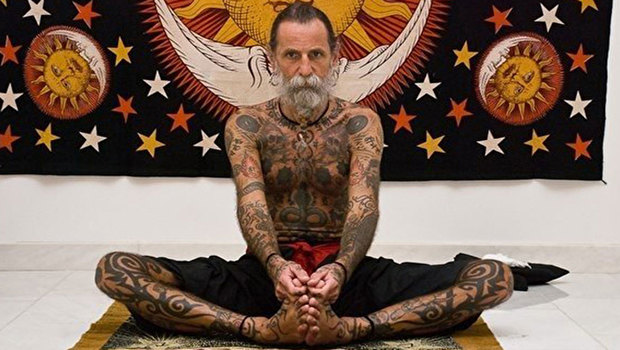Myth #1. Yoga is a sect.
A sect (from Latin “I follow”) is a type of religious organization that opposes the traditionally dominant dogma, opposes itself to the system of generally accepted religious and secular norms and functions as a counterculture.
People practicing yoga become more positive, cheerful, good-natured and purposeful, there is a feeling of inner freedom and a sense of unity with the whole world. Yoga is not an "opposition to generally accepted norms", it is an addition that helps a person to more effectively realize himself in society, family, "find himself".
Myth #2. Yoga is a religion.
Yoga is not a religious, but a spiritual system, or a system of spiritual self-improvement. Yoga is practiced by Christians, Muslims, Buddhists and atheists. Yoga does not impose or require any religious ideas or preferences, on the contrary, it leads to clarity of mind, makes a person think, analyze his actions and intentions, question the imposed views and study. At its core, yoga is closer to science than to religion, since yoga was created by the ancient sages (rishis), who, through research, trial, error and observation, developed and systematized exercises that help a person improve his body and mind, grow spiritually and become more harmonious and balanced.
Myth #3. Yoga requires vegetarianism.
Yoga does not impose or require anything from the practitioner. There are some recommendations (including nutrition) that help accelerate progress in the practice and increase its effectiveness. It is recommended to exclude opiates, stupefying and intoxicating substances, as they lower awareness, dull the personality and take a huge amount of energy, instead of activity, apathy and depression appear, which contradicts the essence of yoga. Yoga classes lead to mental clarity and energy. Nevertheless, a person practicing yoga can eat meat or refuse it, but not by violence against himself and willpower, but simply by listening to the needs of his body.

Myth number 4. Yoga is stretching.
Yoga classes are a set of exercises aimed at strengthening and relaxing the body, gaining physical harmony. It has been scientifically proven that the easiest and most effective way to relax a tense muscle is to stretch it, so yoga includes stretching complexes for the legs and hip joints, but in this case, the goal of the exercises is not stretching itself, but muscle relaxation and work with breathing and attention.
Myth number 5. Yogis put their feet behind their heads and sleep on nails, boil the blood and stop the heart.
Yoga really allows a person to gain a certain control over the body - to better feel and understand his body, anticipate disturbances in the internal balance and be aware of his needs. But to gain complete control over the body, many years of very hard training are required.
Myth number 6. Yoga involves withdrawal from society.
Yoga does not welcome leaving society or running away from problems. The correct practice of yoga gives a huge amount of energy that you can invest in any business, and especially in your development and realization. Most yoga practitioners are successful, socially accomplished people with happy families. Yoga is happiness, enjoyment of life, which often includes active social activities.
Myth number 7. Yoga promotes weight loss.
Slowing down your metabolism means that yoga, on the contrary, promotes weight gain. In general, it is impossible to lose weight without intense calorie burning. But when doing yoga, the calorie expenditure is so negligible that it is difficult to take into account for weight loss. And the legendary thinness of real yogis, such as they are drawn in the pictures, is the result of a long-term regimen of limited nutrition.

Myth number 8. Yoga is absolutely safe. Even babies can do it.
Yoga can be very dangerous. For example, William Broad, author of The Science of Yoga and journalist for The Times, says: “Yoga is just a tool. Any tool, if used incorrectly, can break something. Yoga can produce a whole wave of injuries and negative consequences ... In general, both the risks and the benefits of yoga have exceeded my expectations in many times.” Especially dangerous is the so-called "hot yoga", when yoga classes take place in conditions of high temperature and humidity.
Myth number 9. Yoga is for women only.
The truth is that all people, not just women, are in search of inner harmony and tranquility, they want to avoid illness and live healthy, happily ever after. Yoga offers something for anyone interested in physical, mental or spiritual development and is not a discipline for women or men only. Many men (including athletes) practice yoga regularly and they have found that it gives them great benefits in all areas of life.
Myth number 10. Yoga gives fantastic abilities.
These myths include beliefs like: “All people who practice yoga for many years look young”, “All people who practice yoga are long-lived and never get sick”, “If you practice yoga, you will definitely achieve spiritual enlightenment.” These myths are being dispelled as yoga practice matures. What may be true for one person may not necessarily be true for another. Yoga is not a panacea for all diseases, does not increase life expectancy by two or three times for every practitioner, not every yoga practitioner will become an enlightened sage. The practice of yoga gives a new degree of self-awareness, helps to calm the mind, stay intensely in the present moment, learn to distinguish the important from the unimportant and the good from the pleasant. This is not something supernatural, and at the same time allows you to feel a new quality of Life. Strengthening and maintaining health, maintaining a good physical shape, good looks, beautiful speech, a calm mind are far from all the fruits that a competent yoga practice can bring!
Myth No. 11. To be successful in yoga, you need to practice from childhood.
It is very good when a child joins yoga from an early age and lays a powerful foundation for a healthy body and a strong psyche for the future. This is really great, and we all should make efforts in this direction. However, history is replete with facts when people began to practice either in old age or as a result of significant damage and deviations in the body and reached the heights of mastery.
To illustrate, I would like to give the example of the Belgian Queen, whom B.K.S. undertook to teach the art of yoga. Iyengar. We all know that today the fashion for yoga has spread widely in the "elite of society" and this fact would not be so unique if not for one BUT. At the time of the beginning of training, the Queen turned 84 years old! As a result of training, she was able to fulfill her goal - to stand in shirshasana (headstand).
Myth number 12. With our rhythm of life, it will not be possible to fully practice yoga.
Of course, due to family responsibilities and social life, most of us do not have time to devote three hours to asana practice, a couple of hours of pranayama and a few more hours of meditation, but THIS is NOT NEEDED. Yoga is efficiency in any action. Yoga should serve our lives, not the other way around. Many do not understand this moment and make a cult out of yoga, which they force themselves to believe in and "drag" others. The practice of yoga is the impeccable performance of one's duties, according to the level of evolutionary development. And here, you see, any form of activity will do. Of course, immersion in the practice of working with the body takes a significant place. And many yoga systems can help with this, adapted to our frantic pace of life, our mentality and our structure of the musculoskeletal system.
Myth number 13. Yoga practitioners become inadequate.
Yes, a person who regularly practices yoga really becomes “not like everyone else” at a certain stage of development. But this individual feature does not appear as a result of any negative deviations, but due to the disclosure of his own individual potential of the body, mind and psyche. It is already quite difficult to “convince” such a person from the TV screen that the standard of health is cola and hamburgers, the standard of prestige is expensive things, and the standard of mind is a “high-quality and expensive” education.
Myth #14. Anyone can teach yoga.
To teach yoga, it is not enough just to be flexible and practice yoga yourself.
In order to become a yoga teacher, you need to take a special course and practice yoga for several years, reinforcing it with spiritual growth and meditation.
Author: Elena Ulmasbaeva








